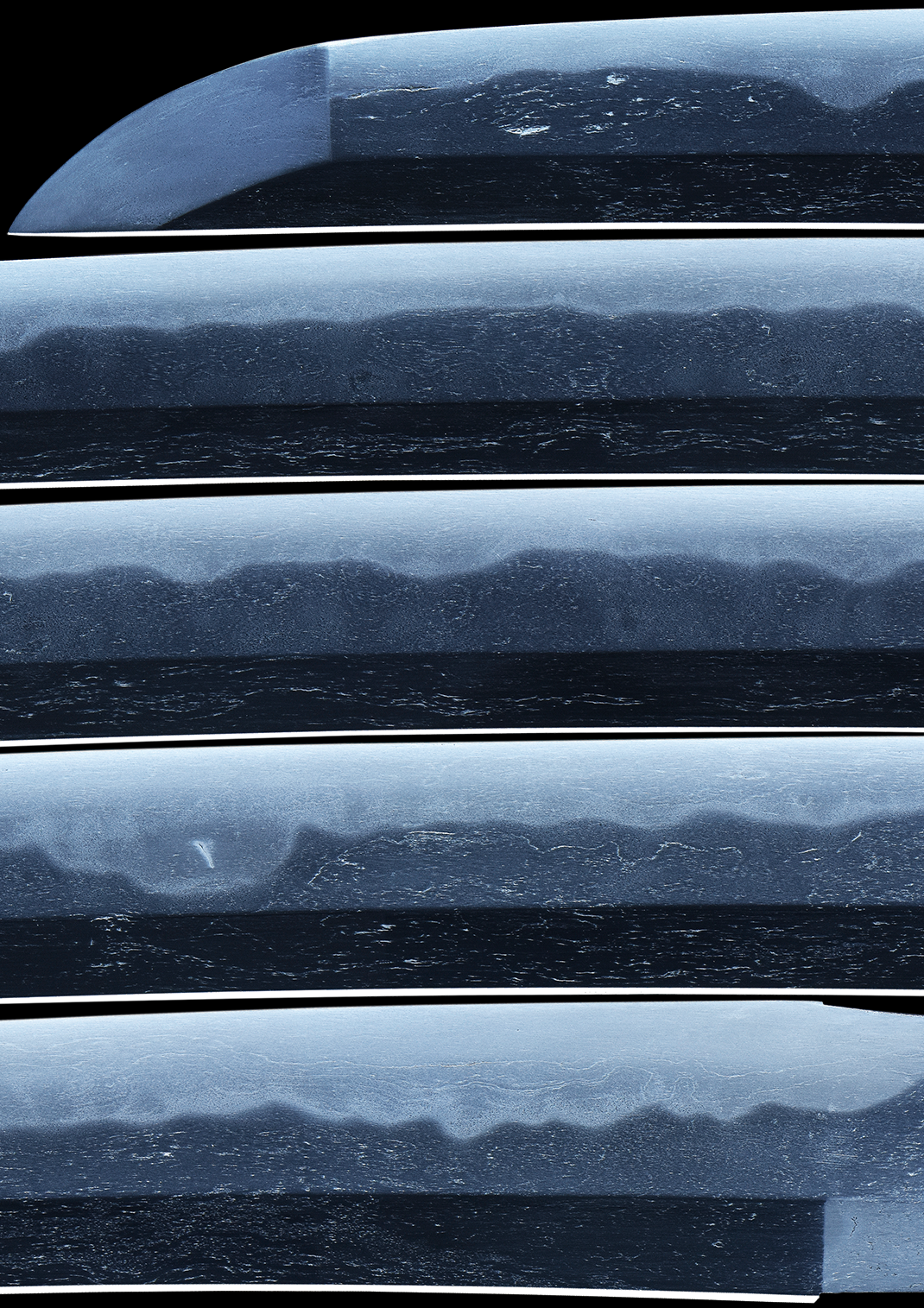Shodai Daido was a smith working in the Mino tradition, and achieved the title of Mutsu no Kami in 1574. His work period dates to the transition years in the Keicho era where Koto gave way to Shinto. His history states that he was the personal swordsmith to Oda Nobunaga who employed smiths of the Mino tradition (the rise of his armies contributed to the spread of the Mino style throughout Japan, and its large contribution to what would become the Shinto style). He reportedly moved to Kyoto with his sons Iga no Kami Kanemichi (Jo-saku), Rai Kinmichi (Jo-saku), Tanba no Kami Yoshimichi (Jo-saku), and Etchu no Kami Masatoshi (Jo-jo saku) making swords for Nobunaga. They would become the Kyoto Gokaji, or the Five Swordsmiths of Kyoto.
All of them have sharpness ratings of at least wazamono, so they made blades well in keeping of the warrior tradition of Mino, and from the success and fame of his sons it would seem that Daido was a very good teacher.
Daido began his career with the name of Kanemichi, which explains the names of several of his sons. He was granted the “O” character 大from emperor Ogimachi. After using the name O-Kanemichi, he later changed to “Daido”, using the alternate reading of the 大 character. Fujishiro seems to interpret the two signatures as two different smiths, though he records this story under Kanemichi. Kanemichi is dated to 1558 (Eiroku) and listed at Chu-jo Saku and Daido to 1596 (Keicho) at Jo-saku so there was an improvement in skill over time.
SHIN-GUNTO SWORDS
Shin-gunto, army officers swords, are the most common style of sword mountings from the World War II era. There is an enormous difference in quality of both blades and mounts of this period. Many, perhaps most, of the blades found in shin-gunto mounts are NOT traditionally made swords. Many are machine made and therefore are of interest only as military relics, not as art swords. Some blades made during the war period were handmade but not by traditional methods. These are classified as either Showato, Muratato, Mantetsuto, Hantanzo or Yotetsuto depending on method of production.
The blade found in these mounts are traditionaly made and would be considered an ancestral blade. The hamon is a vibrant gunome midare with sporadic pointed gunome peaks covered in ji-nie. The hada is also nie laden and a perfec t mix of itame , mokume and some masa-nagare thast come off as swirls. The kissaki is longish and the boshi is ko-maru. There are some hada-ware/flaws here and there which would be expected. This sword exudes battle ware with it rough metal saya and soiled handle.an original once gold washed 2-piece copper habaki exists as well. A memernto to enjoy and behold!
- Mei: Mutsu no Kami Daido
- Date: Edo (1600’s-1700’s)
- Nagasa: 20 inches
- Sori: 16.0 mm
- Width at the ha-machi: 28.6 mm
- Width at the yokote: 19.4 mm
- Thickness at the mune-machi: 6.6 mm
- Construction: Shinogi zukuri
- Mune: Iori
- Nakago: Ubu
- Kitae: Itame/mokume
- Hamon: Midare Gunome
- Boshi: Maru
- Condition: Good polish
(shipping and insurance included)
Email us if your interested in this item and remember to include the order number for this item: fss-905.
Click to Enlarge Image
For Sale
























